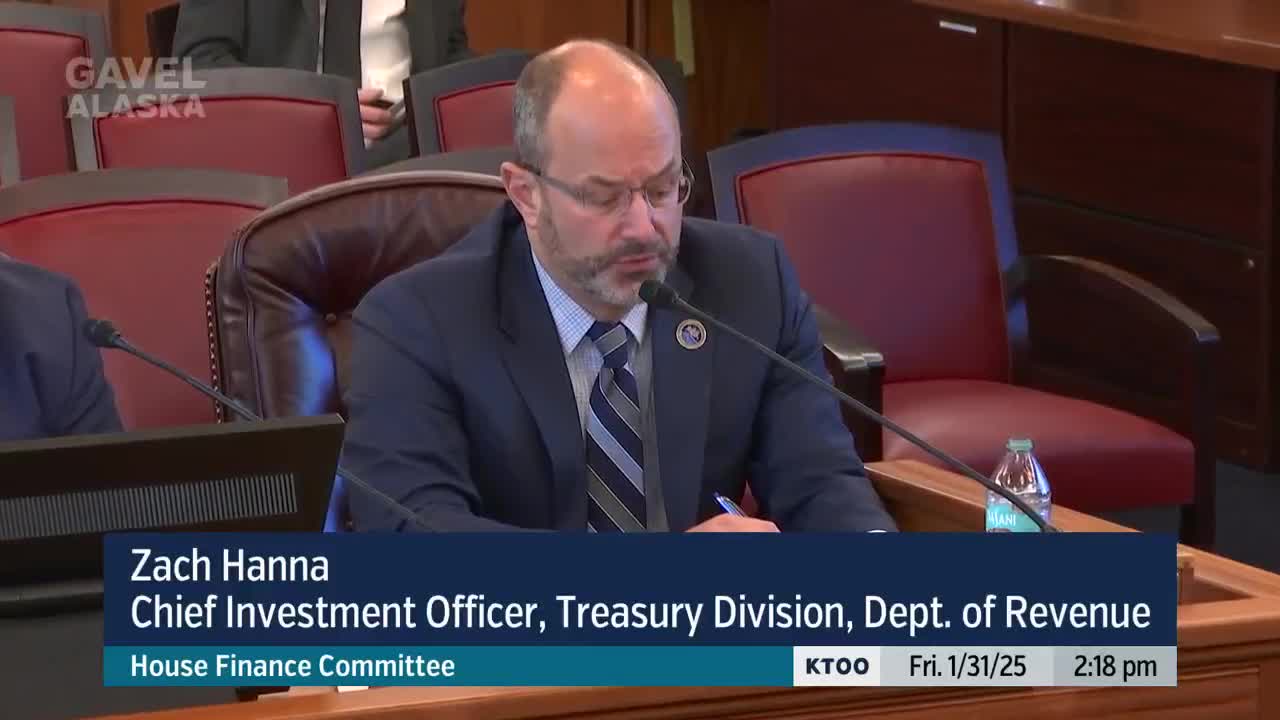Treasury outlines inflation-proofing strategy for children's trust fund with 11.39% gains
January 31, 2025 | 2025 Legislature Alaska, Alaska
This article was created by AI summarizing key points discussed. AI makes mistakes, so for full details and context, please refer to the video of the full meeting. Please report any errors so we can fix them. Report an error »

In a recent meeting of the House Finance Committee, discussions centered around the performance and management of a significant state fund, highlighting its resilience and strategic inflation-proofing measures. As the committee convened, the atmosphere was charged with a sense of responsibility, as members delved into the financial health of the fund, which has seen a remarkable 11.39% return over the past year, translating to gains of $88 million. This performance has effectively restored the fund to its peak asset levels, reminiscent of its status in 2021 before a downturn in 2022.
The conversation took a deeper turn as Representative Schrage sought clarity on the mechanisms in place for inflation proofing the fund. The treasurer's office explained that the fund is designed to increase net income over extended periods, a requirement rooted in statutory language. This involves a complex process of five-year smoothing and projections based on capital market and inflation assumptions. The committee learned that the legislature can appropriate up to 5% of this smoothed value, but the treasurer's office often recommends a lower percentage to ensure the fund's principal remains intact and continues to grow.
The treasurer's office emphasized the importance of maintaining the fund's integrity, likening it to a "mini permanent fund." This approach ensures that while the fund can provide sustainable annual returns, it does not dip into its principal, safeguarding its long-term viability. The committee members expressed interest in the historical adherence to these recommendations, acknowledging that while some years the full 5% appropriation is deemed appropriate, other years call for more conservative spending.
As the meeting concluded, the discussions underscored the delicate balance between immediate financial needs and the long-term health of state resources. The committee's commitment to prudent financial management reflects a broader understanding of the challenges ahead, as they navigate the complexities of state funding and economic stability.
The conversation took a deeper turn as Representative Schrage sought clarity on the mechanisms in place for inflation proofing the fund. The treasurer's office explained that the fund is designed to increase net income over extended periods, a requirement rooted in statutory language. This involves a complex process of five-year smoothing and projections based on capital market and inflation assumptions. The committee learned that the legislature can appropriate up to 5% of this smoothed value, but the treasurer's office often recommends a lower percentage to ensure the fund's principal remains intact and continues to grow.
The treasurer's office emphasized the importance of maintaining the fund's integrity, likening it to a "mini permanent fund." This approach ensures that while the fund can provide sustainable annual returns, it does not dip into its principal, safeguarding its long-term viability. The committee members expressed interest in the historical adherence to these recommendations, acknowledging that while some years the full 5% appropriation is deemed appropriate, other years call for more conservative spending.
As the meeting concluded, the discussions underscored the delicate balance between immediate financial needs and the long-term health of state resources. The committee's commitment to prudent financial management reflects a broader understanding of the challenges ahead, as they navigate the complexities of state funding and economic stability.
View full meeting
This article is based on a recent meeting—watch the full video and explore the complete transcript for deeper insights into the discussion.
View full meeting
